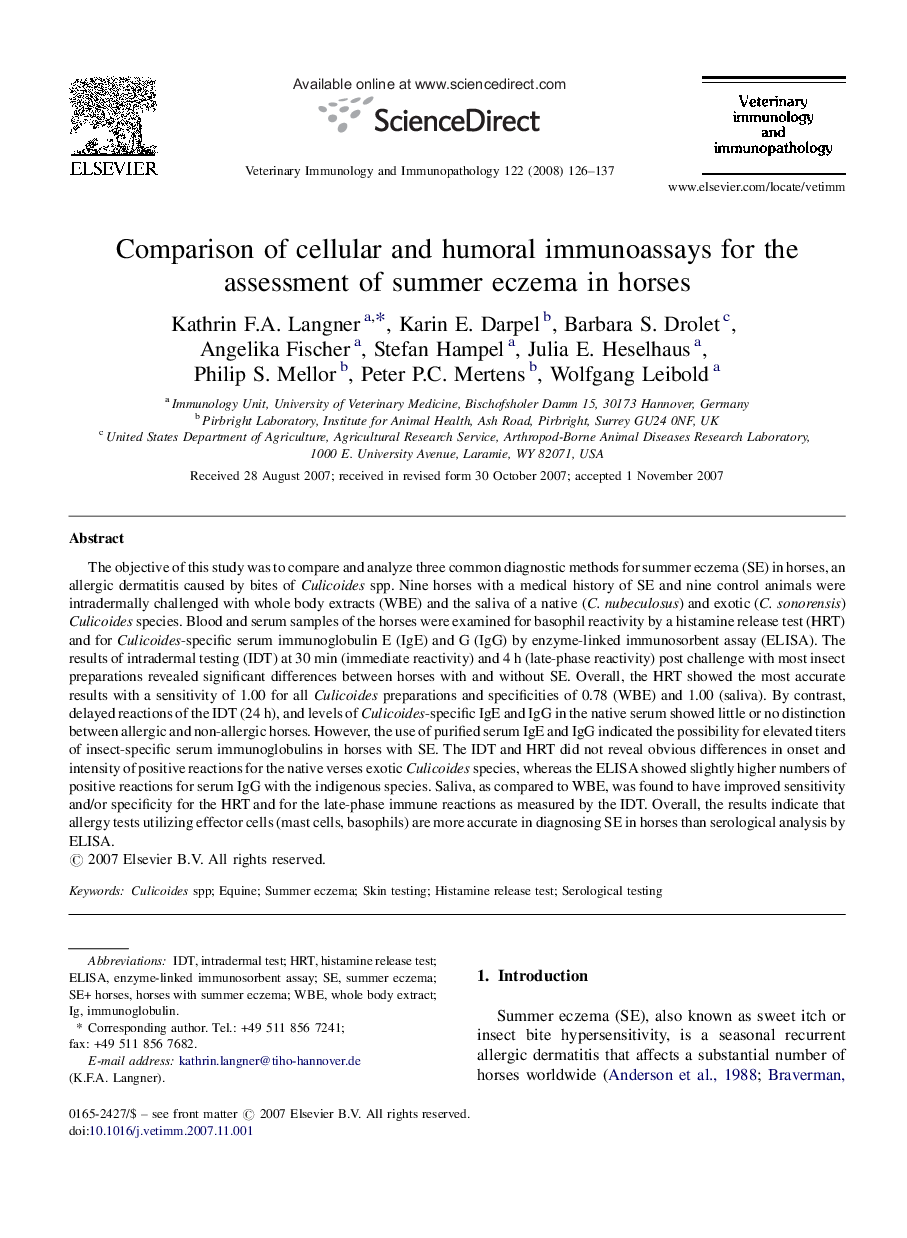| Article ID | Journal | Published Year | Pages | File Type |
|---|---|---|---|---|
| 2463109 | Veterinary Immunology and Immunopathology | 2008 | 12 Pages |
The objective of this study was to compare and analyze three common diagnostic methods for summer eczema (SE) in horses, an allergic dermatitis caused by bites of Culicoides spp. Nine horses with a medical history of SE and nine control animals were intradermally challenged with whole body extracts (WBE) and the saliva of a native (C. nubeculosus) and exotic (C. sonorensis) Culicoides species. Blood and serum samples of the horses were examined for basophil reactivity by a histamine release test (HRT) and for Culicoides-specific serum immunoglobulin E (IgE) and G (IgG) by enzyme-linked immunosorbent assay (ELISA). The results of intradermal testing (IDT) at 30 min (immediate reactivity) and 4 h (late-phase reactivity) post challenge with most insect preparations revealed significant differences between horses with and without SE. Overall, the HRT showed the most accurate results with a sensitivity of 1.00 for all Culicoides preparations and specificities of 0.78 (WBE) and 1.00 (saliva). By contrast, delayed reactions of the IDT (24 h), and levels of Culicoides-specific IgE and IgG in the native serum showed little or no distinction between allergic and non-allergic horses. However, the use of purified serum IgE and IgG indicated the possibility for elevated titers of insect-specific serum immunoglobulins in horses with SE. The IDT and HRT did not reveal obvious differences in onset and intensity of positive reactions for the native verses exotic Culicoides species, whereas the ELISA showed slightly higher numbers of positive reactions for serum IgG with the indigenous species. Saliva, as compared to WBE, was found to have improved sensitivity and/or specificity for the HRT and for the late-phase immune reactions as measured by the IDT. Overall, the results indicate that allergy tests utilizing effector cells (mast cells, basophils) are more accurate in diagnosing SE in horses than serological analysis by ELISA.
